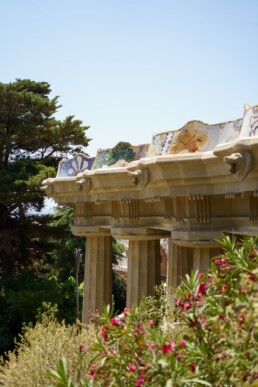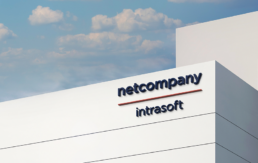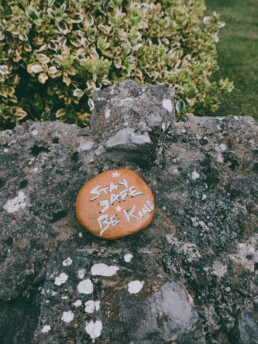Interview with Olga Trevisan, IAAC explaining Use Case 3
https://youtu.be/lDWjJB-TTm8
In this interview, Olga Trevisan, from IAAC, explains how they are working to develop DAFNE+ project. "We are collaboraing with the maker and design community researching viable tools and methods that can benefit our communities in the digital landscape", says.
In this sense, the Distributed Design Platform (coordinated by IAAC) will be engaged - a distributed creative community of 1600+ novel content creators across making, art and design. Based on the global Fab Lab Network of 35,000+ users, the platform is undertaking research and development into creative alternatives to industrial processes. "Another aspect that the platform is developing is to assist content creator on various copyright agreements", she adds, in order to explain how this can be useful to artists and designers.
Artists and designers can take advantage of the tools provided on the DAFNE+ platform to create, distribute and buy original artistic content that can be used for emerging technologies, such as VR/AR applications and games.
KU Leuven highlighting the legal aspects and opportunities arising from DAFNE+
KU Leuven's (KUL) Centre for IT & IP Law (CiTiP) is an academic research centre at the KUL Faculty of Law and Criminology, specialising in the legal and ethical aspects of IT innovation and intellectual property. The centre's research aims at fundamentally rethinking the current legal framework in light of rapid technological change by adopting an intra- and extra-juridical interdisciplinary approach encompassing legal, technical, economic, ethical, and socio-cultural perspectives. Its international reputation has established CiTiP as a law and ethics partner on large international and interdisciplinary research projects covering the areas of Artificial Intelligence & Autonomous systems, Data Protection & Privacy, eHealth & Pharma, Ethics & Law, Intellectual Property, Media & Telecommunications and (Cyber)security.
Given its established expertise in Intellectual Property, within the DAFNE+ project, KU Leuven CiTiP is leading Work Package 6. Dr. Thomas Margoni is the project P.I with Leander Samuel Stähler and Francesca Portante d’Alessandro as researchers. By bringing its in-depth legal knowledge to the table, the centre is responsible for the drafting of deliverable 6.1, which will provide relevant legal research and analysis of the IPR and data privacy implications of the DAFNE+ platform and its use of blockchain technology. This contribution is essential in understanding the problems and opportunities of implementing the DAFNE+ platform.
The research will first map relevant applicable legal frameworks, focusing on copyright and related rights due to their direct relevance to the project's use cases. Exclusive rights licensing through non-fungible tokens will then be assessed, utilising an empirical study of NFT sale platforms' user rights terms of service to highlight current system flaws and develop a proposal on modular licensing for the online sale of digital assets. The proposed model will consist of a flexible licensing scheme of economic, commercial, and creative rights that will benefit both buyer and seller while empowering creators. Finally, the research will investigate the distinct copyright concerns of each of the project's three use cases, proposing how the asset can be licensed to respect rights holders' interests yet grant user rights to the acquirer. Alongside highlighting the problems and opportunities arising from the project platform and three use cases, the centre also aims to produce independent research material that may help further develop the project.
Within the above tasks, KU Leuven CiTiP actively collaborates with the FabCity Foundation on achieving the goals set by Work Package 6 and the dissemination strategy of Work Package 7. Regular meetings through communication channels ensure the smooth functioning of such partnerships.
In summary, KU Leuven CiTiP’s expertise and experience in the legal field contribute to the projects' implementation and overall success.
DAFNE+ Platform is live!
A historic moment in the digital art and design landscape is happening with the official launch of DAFNE+ Platform, a cutting-edge NFT platform crafted to push forward the community of artists, designers, and musicians.
DAFNE+ Platform is designed to address the evolving needs of digital content creators, providing them with innovative tools for creation, distribution, and monetization of their artistic works through blockchain technology. “One of the main purposes of the project is to make content distribution fair”, explains Iago Fernández-Cedrón, Project Manager of DAFNE+ and Investigator at UPM.
In this sense the creator will be able to find tools like Style Transfer, 3D Object Reconstruction, 3D Human Pose Estimation, and Virtual Avatar Personalization to unleash its creativity. This platform is set to redefine the way artists bring their imaginations to life in the digital space.
But, DAFNE+ Platform is more than just a compendium of innovative tools; it looks to create a vibrant community where artists, designers, and musicians converge to share, collaborate, and inspire. With a user-friendly interface and robust features, the platform is designed to foster creativity and innovation but also to promote a fairer content distribution.
Interview with Tobey Dubois-Heys, from SODA, about Use Case 1
https://youtu.be/aZa3EA6OMrg
The DAFNE+ platform has several use case scenarios that demonstrate the potential of the platform to empower users and communities in the cultural heritage sector.
In this first set of interviews, Tobey Dubois-Heys, from the School of Digital Arts (SODA), from Manchester Metropolitan University, explains what is Use Case 1 is about. The first thing that he points out is the target audience. DAFNE+ project Use Case 1 "reachs out to prosumers, students, staff and all other industry partners". In this sense, Dubois-Heys says that DAFNE+ is really interesting for SODA because "it acts as a boundary breaking research project allows staff and students and industry partners to work together on NFT culture".
This use case is, as Dubois-Heys confirms, "a really good way of getting out into a community of makers and cultural producers who are absolutely involved in digital arts and digital creative projects".
In the other hand, for him DAFNE+ highlights "interesting questions that are happening for all creators right now in terms of IP, ownership, trustworthiness and remuneration and how all this things are changing because of the speed of change within digital technologies".
Supporting the journey from student to professional through the blockchain
Manchester Metropolitan University will focus on the challenges faced by new creative producers entering the digital and creative industries. Two Creative Jam events will test and discuss the DAFNE+ tools and concepts and empower development of a sustainable student-first community for existing learners and graduates.
For creative arts students finding their way in the digital and creative industries, it can be difficult to find your first steps in your career without support. One of the measures that can help is to join and take part in a creative network that provides opportunities to share your work, gain recognition and be part of community projects that can form part of a future portfolio. Through the DAFNE+ project, Manchester Metropolitan University aims to address the crucial question of how blockchain technology can be leveraged to facilitate a supportive and sustainable student-first creative community.
Building a supportive community
Manchester Metropolitan University researchers on the project will build out a creative student community called Shareloom creating a safe space where students and partners can interact, share, buy and sell work and creative services. DAFNE+’s new digital tools and NFT features will be studied by and integrated into Shareloom student community online forums and in-person community events, allowing students easier access to tools that can support their career development as they seek to realise ideas, and monetise their portfolios and creative skillsets in a safe and secure environment.
In particular the DAFNE+ is helping researchers explore how we:
- Protect student work online using declaration of asset and artwork ownership through the blockchain.
- Enable a student or student group to sell finished work more fairly via NFT: ability to monetize your work through NFT-based distribution.
- Manage group projects and events through blockchain based community interaction: group and collective work management through decentralised autonomous organisation.
Creative Jam – in Manchester and Barcelona
In the first phase of testing, we will run a one-week Creative Jam in January 2024 with students in Manchester Metropolitan University in the UK and students at the Institute for Advanced Architecture of Catalonia (IAAC) in Barcelona with DAFNE+ project partners FabLab. Students will be introduced to the fairer business models and working practices made possible by the project such as allowing collaborative authorship to be acknowledged and remunerated using innovative NFT technology and legal schemes. Students will also explore the fairer use of a decentralised autonomous organisations (DAO) that could allow better network wide decision making on core issues of governance. The Creative Jam is expected to be complemented by talks from experts at the BBC North, Known Origin and others in the field. An output of the jam event will be an exhibition online. Students from the two European cities will discuss the nature of the exhibition and it will use DAFNE+ and its tools to facilitate.
Feeding back into the DAFNE+ project
The Creative Jam event will play a crucial role in the initial user testing of the DAFNE+ tools and features for this use case. As well as providing country-specific feedback, it is expected that the event will bring together staff and students from Manchester and Barcalona campuses in hybrid (online and in-person setting), providing a unique opportunity for cross-cultural collaboration and knowledge exchange that will benefit analysis of the platform and feed into its aims for new forms of community building. The second jam will take place a year later in January 2025 with the final version of DAFNE+.
European Law on Artificial Intelligence has been published
The European Law on Artificial Intelligence (AI) holds significant implications for the creative industry, ushering in a new era of responsible and ethical use of AI technologies. Here are several ways in which this legislation can impact and benefit the creative sector:
- Ethical AI Practices:
- The law emphasizes the importance of ethical considerations in AI development. For the creative industry, this means incorporating AI technologies responsibly in content creation, ensuring that AI-generated content aligns with ethical standards and respects cultural sensitivities.
- Prevention of Discrimination and Bias:
- One of the key aspects of the legislation is the commitment to preventing discrimination and bias in AI systems. In the creative industry, this can translate to more inclusive and diverse representation in AI-generated content, fostering creativity that respects and reflects the diversity of audiences.
- Transparency and Accountability:
- The law promotes transparency in AI systems, ensuring that users are informed when they interact with AI-generated content. In the creative industry, transparency can enhance the relationship between creators and their audiences, fostering trust and understanding about the role of AI in content creation.
- Human Oversight in AI-Generated Content:
- High-risk AI applications, including those used in critical infrastructure and content creation, will require human oversight according to the legislation. This ensures that human creativity and judgment remain integral in the creative process, even when AI tools are employed.
- Protection of Intellectual Property:
- The legislation's emphasis on protecting fundamental rights includes safeguarding intellectual property. For artists and creators, this means that AI-generated content should respect copyright laws and intellectual property rights, preventing unauthorized use or replication.
- Incentive for Innovation in the Creative Industry:
- By setting clear guidelines and standards, the law provides a regulatory framework that can stimulate responsible innovation in the creative industry. It encourages the adoption of AI tools for enhanced creativity while ensuring that these tools are used ethically.
- Promotion of European Excellence:
- The legislation positions Europe as a leader in shaping the ethical landscape of AI. This can attract talent and investment to the European creative industry, fostering an environment where businesses and creators are recognized for their commitment to responsible AI practices.
- Global Influence and Collaboration:
- As the European Union takes a proactive stance on regulating AI, it sets an example for global standards. This can encourage international collaboration in the creative industry, with shared principles that promote ethical AI use worldwide.
In summary, the European Law on Artificial Intelligence brings a framework that encourages responsible AI practices in the creative industry. By promoting ethical considerations, transparency, and human oversight, it seeks to ensure that AI technologies are harnessed in a manner that aligns with societal values and respects the integrity of creative expression. This can lead to a more vibrant, inclusive, and ethically driven creative landscape in Europe and beyond.
UPM, leading DAFNE+ Project
Universidad Politécnica de Madrid (UPM) is one of the most prestigious technical universities in Spain and Europe, offering a wide range of undergraduate, graduate, and doctoral programs in engineering, architecture, and technology-related fields of study. Established in 1971, UPM has become a leading institution in higher education, research, and innovation, providing quality education and cutting-edge research opportunities to students from all around the world.
UPM’s academic programs are designed to provide students with comprehensive theoretical and practical knowledge, preparing them to become highly skilled professionals and leaders in their fields. The university’s faculty is composed of renowned scholars and experts in their respective fields, providing students with a high-quality education that combines academic rigor with practical application.
Inside UPM, Grupo de Aplicaciones de Telecomunicación Visual (GATV) or Visual Telecommunications Applications Group is a research group at the Universidad Politécnica de Madrid focused on developing advanced multimedia technologies for various applications, including virtual reality, immersive media, and multimedia communication. The GATV research group has participated in more than 150 research projects (25 in H2020 and 10 in Horizon Europe) and has a long history of research excellence, with numerous publications in leading international conferences and journals, as well as active participation in national and international research projects. Their research activities are focused on several areas, including 3D modeling and reconstruction, visual analytics, multimedia communication, and immersive media.
In DAFNE+, UPM plays an important role as leader of the project, whose purpose is creating a decentralized platform for fair creative content distribution empowering creators and communities through new digital distribution models based on digital tokens.
UPM also leads Use Case 1 called "User generated heritage content". In this use case DAFNE+ is going to demonstrate the focus to users willing to produce content, to be exchanged in the platform with other users or communities or consumed, with the corresponding reward. In DAFNE+ platform users will be empowered to generate their content with the control of where, how, who and with fair conditions, their content can be exchanged and revenues are fairly distributed to the prosumers as creators, and their communities behind.
Netcompany-Intrasoft in DAFNE+
Netcompany-Intrasoft is a leading European IT Solutions and Services Group with strong international presence and expertise, offering innovative and added-value solutions of the highest quality to a wide range of international and national public and private organizations. The Company’s Head Offices are located in Luxembourg (2b rue Nicolas Bové, L-1253 Luxembourg).
Netcompany-Intrasoft (previously known as INTRASOFT International) was founded in 1996 by Intracom Holdings and remained a member of it until October 2021. As of November 2021, Netcompany-Intrasoft became a member of the Netcompany Group, a Denmark located IT company founded in 2000. Netcompany is the fastest growing and most successful IT services company in the Nordics, owning vast technology experience and deep industry-specific knowledge, creating innovative solutions tailored to meet business goals.
Netcompany-Intrasoft employs more than 3,200 highly skilled professionals, representing over 50 different nationalities and mastering more than 30 languages. With headquarters in Luxembourg, Netcompany-Intrasoft operates through its operational branches, subsidiaries and offices in 10 countries: Belgium, Cyprus, Greece, Jordan, Luxembourg, Romania, RSA, Scandinavia, UAE and USA. More than 500 organizations in over 70 countries worldwide have chosen the company's services and solutions to fulfill their business needs.
Netcompany-Intrasoft's expertise and strength lie in its proven capacity and successful track record in undertaking and delivering, complex, mission - critical projects. Netcompany-Intrasoft's professionals have developed the ability to combine their technical expertise with thorough understanding of each customer’s individual business needs.
Τhe Research and Innovation department participating in DAFNE+ research project explores emerging technologies and their application in diverse sectors paving the way for the company’s products and continuously enhancing its capacities.
In DAFNE+, Netcompany-Intrasoft brings in its expertise in user-led platform design and blockchain technologies and thus leads the user requirements, system architecture and specifications efforts. Additionally, it plays a significant role in the development of the decentralized blockchain-based marketplace of cultural artefacts and NFT -based exchanges
What is a wallet?
The metaverse and the blockchain space has brought a whole new dimension to the Internet. This new begining of the online world has created new opportunities for many sectors like the creative economy. New opportunities but also new threats, so one of the first things an artist starting in this space should do is get familiar with the new concepts and terminology and understand them. One of those first concepts to be learnt is a wallet because it will be of vital importance to maintain the security over the NFTs they create.
What is a wallet?
A "wallet" is a digital tool or software that allows individuals to store, manage and interact with their cryptocurrencies or NFTs. It serves a similar purpose to a physical wallet for traditional currency but is used to store digital assets. So this way, the main purpose of a wallet is storage, to keep and control your digital assets on the blockchain through cryptographic keys (private and public keys) needed to access and control it. Another important function is security because they are used to protect your cryptocurrency holdings by requiring authentication to access the keys. The third function that we can apply to wallets is transaction management because they allow you to send and receive cryptocurrencies. You can use your wallet's interface to create and sign transactions. And the last one could be balance inquiry because you can check your cryptocurrency balance within your wallet to see how much of a particular cryptocurrency you own.
Types of Wallets
Even though most of the wallets are used in a similar way and have the same functionalities in the market you can find several types.
- Software Wallets (Hot):
- Online Wallets: These are cloud-based wallets that you can access through a web browser. They are convenient but may be less secure.
- Mobile Wallets: These are apps that you can install on your smartphone. They are user-friendly and portable.
- Desktop Wallets: These are software applications that you can download and install on your computer. They provide control but are less portable.
- Browser Extension Wallets: These are browser add-ons that offer easy access to blockchain services.
- Hardware Wallets (Cold):
- These are physical devices specifically designed for securely storing cryptocurrency keys offline. They are often considered one of the most secure options.
- Multisignature Wallets:
- These require multiple private keys to authorize a transaction, providing added security and control.
Choosing the right wallet depends on your needs and priorities. If you're actively trading or using cryptocurrencies, you might prefer a software wallet for convenience. However, if you're holding a significant amount of cryptocurrency for the long term, a hardware wallet is often recommended for its security benefits. It's important to thoroughly research and select a reputable wallet, as the security of your digital assets depends on it.
Fab City Foundation contributing to the definition of new fair economic models
The Fab City Foundation is the stewarding body of the Global Initiative of Fab City, which aims to shift the global production paradigm towards a more meaningful approach to how we organize production and consumption in cities. The Fab City Global Initiative comprises three arms: the Fab City Foundation, Fab City Collective and Fab City Network, which together form a global movement of citizens, government, experts and enthusiasts who work together to instigate this transformation.
The Foundation fosters the structured implementation of the Fab City agenda through innovation projects, distributed educational programs, knowledge transfer opportunities and network building.
In DAFNE+, Fab City Foundation puts this experience to promote fair economic models for the Cultural and Creative Industries. In particular, we work with communities of makers, designers, musicians, and more to find sustainable and fair economic models supported by blockchain technology.
Our contribution to DAFNE+
- Fab City Foundation recognizes the importance of designing and developing innovative economic models, inspired in open and cooperative community practices and innovative blockchain solutions. Our participatory research and design practices help us understand the values of DAFNE+ communities and catalize their creativity towards the design of fair economic models addressing their needs. The community will be actively engaged in the design and testing of these models.
- The Foundation will be evaluating the progress of the project, helping communities to test and validate DAFNE+ platform and tools. These evaluations serve to iterate our designs and improve how our tools support our communities.
- Fab City Foundation will be proposing a sustainable business model for DAFNE+ platform, and define the exploitation strategy of the outcomes of the project. This strategy will support the continuation of the project and maximize its impact. The model will be based in other sustainable blockchain-based and online communities, using direct participation and ownership as well as open collaboration and licenses to drive open innovation and community stewardship.
Fab City Foundation acknowledges the significance of the role of communication technologies infacilitating the cooperation and sharing that the new modes of production need. Our local communities can benefit from a global network that shares designs and information and rewards all contributors while encouraging local adaptations, diversity and the best redistributive practices. Our participation in DAFNE+ will contribute to the definition of new fair economic models, and the development of digital infrastructure to support them. These are key elements for the transition towards sustainable futures we envision.









